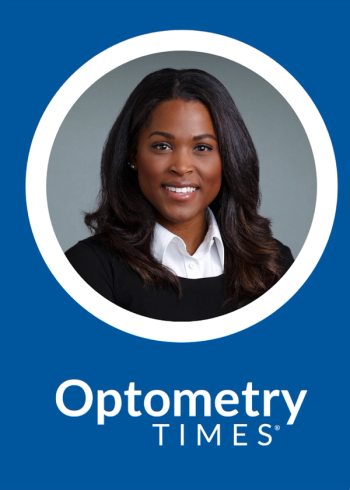
Refractive surgery in 2020: From minimally invasive LASIK to light adjustable lenses
Today’s cataract surgery is more than a medical procedure whose success is defined by the removal of the cloudy lens. In 2020, cataract surgery is truly a refractive surgery, and patients expect excellent visual outcomes as a result.
New technology is allowing for even better ways for patients to achieve reduced dependence on glasses following surgery, even in the most challenging cases.
On this podcast, we explore the latest technology available in improving refractive outcomes for both refractive surgery and cataract patients.
Related:
ODs and refractive surgery
Steven Tersigni, MD, specializies in cornea and cataract who practices at
“The patients who come in who are already educated by their optometrists,” he says. “They make our jobs so much easier and make the outcomes so much better.”
After the popularity of laser in situ keratomileusis (LASIK) and surgical refractive correction took a significant dip during the recession about 10 years ago, data shows that refractive surgery rates in the U.S. are steadily growing over the last five years.1
Dr. Tersigni believes that interest is growing due to the long-term successful outcomes of LASIK procedures that are causing an increased patient confidence. New technology is also driving this growth rate because it expands the range of prescriptions that are now candidates for refractive surgery.
“A lot of the growth we are seeing now is with lens-based refractive surgery,” he says. “We are able to treat more people than ever before.”
Related:
Expanding options
Mild and moderate myopes have the most options, including LASIK, photorefractive keratectomy (PRK), and minimally invasive LASIK or small incision lenticule extraction (SMILE). If the person suffers from dry eye, Dr. Tersigni educates his patients that SMILE is a potentially better option than LASIK due to the smaller incision area and lack of flap creation.
“Vision correction has never been better or safer than it is now,” Dr. Tersigni says.
Pupil tracking is used to ensure centration of treatment zones. Mitomycin C reduces the risk of corneal haze. Femtosecond lasers have created fewer flap complications. Glare and halo have been reduced with the use of blended zones.
Related:
The technological improvements are perhaps best reflected in how many refractive surgeons actually pursue vision correction themselves. Research shows that ophthalmologists specializing in refractive surgery are four times more likely to have surgical vision correction themselves compared to the general population.2
“The people who are doing it day in and day out are so confident in the technology that they are doing it on themselves and their family members,” says Dr. Tersigni.
For higher prescriptions, thin corneas, or patients who weren’t candidates for LASIK or PRK in earlier years, implantable contact lens (ICL) is an increasingly popular alternative. Dr. Tersigni has seen an increase in ICL patients in his practice, even among lower myopes who have corneal challenges that could potentially impact their visual outcomes with a corneal-based procedure.
“Some of my ICL patients are happier with their vision than my traditional LASIK patients,” Dr. Tersigni says.
Another area of growth that Dr. Tersigni has seen is refractive lens exchange for patients who are frustrated with the changing vision of presbyopia.
Related:
“Whether the patient is hyperopic or myopic, there are different types of lenses we can use to customize his vision,” he says.
He encourages ODs to dispel myths about refractive surgery, including common patient beliefs that they aren’t candidates because they have astigmatism or because they are “too old.” Extended depth-of-focus IOLs have allowed for the potential to restore functional range of vision to presbyopic patients who want to reduce their dependency on glasses.
What ODs need to know about LALs
Dr. Tersigni is one of the early adopters of a new advancement in cataract surgery: light adjustable lenses (LALs).
“The light adjustable lens is an awesome new technology that allows us to customize someone’s vison after a lens replacement surgery like we have never been able to do before,” he says.
Dr. Tersigni explains that variables like where the intraocular lens (IOL) settles in the capsule and how the patient heals can affect surgical outcomes. A history of refractive surgery like LASIK or refractive keratectomy (RK) can also greatly affect predicted visual outcomes in traditional surgery. Light adjustable lens technology allows for the doctor to adjust the patient’s final refractive outcome after the eye fully heals from cataract surgery using an in-office light treatment device.
The procedure of cataract surgery using a LAL lens is the same, but the IOL technology is different. The lens is made up of a silicone polymer with macromers: molecules that when exposed to ultraviolet (UV) light will migrate to change the shape of the lens, and thus the refractive power of the lens.
After the normal healing time of cataract surgery, any residual or desired refractive outcome is plugged into a light delivery device by the surgeon, and the light delivery device will emit UV light in a specific pattern to activate the macromers and change the IOL shape to give the desired refractive power.
Related:
The lens can be changed up to three times before the surgeon uses an in-office device to “lock in” the final power. Both spherical and astigmatic refractive errors can be treated with this lens.
During the postoperative period, the patient must wear specific protective glasses to protect the eye from uncontrolled UV light entering the eye and inadvertently changing the shape of the lens and resulting refraction. This is one of the only major differences to the patient experience versus traditional cataract surgery.
If the patient is not willing to use the necessary glasses (a darkly tinted pair for outside and a lighter pair for use indoors) to protect her eyes from inadvertent UV exposure during the postop period, she would not be a candidate for the treatment because refractive results would vary.
There are a few conditions in which this technology would be contraindicated. Patients with severe macular disease or prior herpetic infections that could be reactivated with exposure to high amounts of UV light are contraindicated. Several systemic medications that can increase light sensitivity or retinal toxicity with exposure to UV are also contraindicated. These medications include: tetracycline, doxycycline, psoralens, amiodarone, phenothiazines, chloroquine, hydroxychloroquine, hydrochlorothiazide, hypercin, ketoprofen, piroxicam, lomefloxacin, and methoxsalen.3
Related:
Dr. Tersigni says that patients can expect LALs will provide them the most glasses freedom compared to other IOL options on the market today. Certain fine detail tasks like threading a needle, especially in low lighting, may require over-the-counter reading glasses, but the majority of the patient’s needs can be potentially met without spectacle wear.
Dr. Tersigni says that the LAL can be used to allow patients “test drive” different visual set-ups. For example, a patient could try monovison for a few weeks, and then try distance only if monovision doesn’t meet his visual needs. The ability for the patient to “try out” different refractive corrections before being locked in to a final prescription makes this lens the only customizable option in refractive surgery.
Light adjustable lenses were FDA approved in 20173 and have been commercially available on the market for about six months, but they are slowly becoming more available in practices around the country. Future expansion of the technology is in development to create extended depth-of-focus optics in the lens for presbyopic treatment.
Contact Dr. Tersigni at
More by Dr. Lyerly:
References:
1. Statista. Number of LASIK surgeries in the United States from 1996 to 2020. Available at: https://www.statista.com/statistics/271478/number-of-lasik-surgeries-in-the-us/. Accessed 4/16/20.
2. Kezirian GM, Parkhurst GD, Brinton JP, Norden RA. Prevalence of laser vision correction in ophthalmologists who perform refractive surgery. J Cataract Refract Surg. 2015 Sep;41(9):1826-32.
3. Food and Drug Administration. FDA approves first implanted lens that can be adjusted after cataract surgery to improve vision without eyeglasses in some patients. Available at: https://www.fda.gov/news-events/press-announcements/fda-approves-first-implanted-lens-can-be-adjusted-after-cataract-surgery-improve-vision-without. Accessed 4/16/20.
Newsletter
Want more insights like this? Subscribe to Optometry Times and get clinical pearls and practice tips delivered straight to your inbox.










































